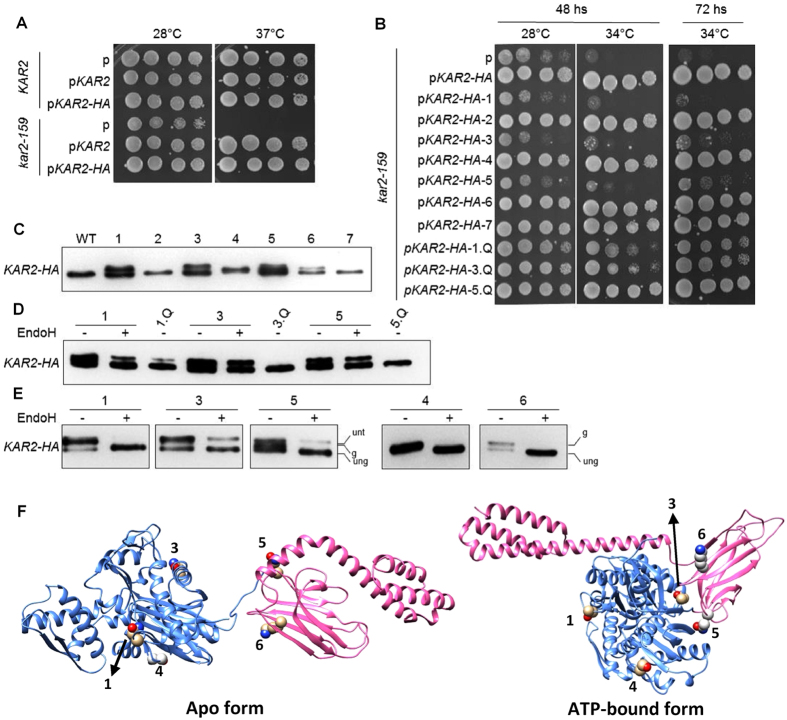Figure 5.
Introducing N-glycosylation sites in yeast Kar2 severely impairs its function. The wild-type yeast strain KAR2 and the temperature sensitive mutant kar2-159 were transformed with an empty vector (p), or vectors for the expression of Kar2, Kar2-HA, variant Kar2-HA introducing sequons 1 through 7 (see text for details), or Kar2-HA sequon-revertants 1.Q, 3.Q, or 5.Q, as indicated. In sequon revertants, the introduced sequons encoding Asn were replaced by the codon encoding Gln. (A) Liquid cultures of transformed KAR2 and kar2-159 strains or (B) kar2-159 strains transformed with KAR2-HA glycosylation variants were grown overnight, serially diluted, spotted onto SC-URA plates and grown at the indicated temperatures and times. (C) anti-HA western blot from kar2-159 transformed with wild type KAR2-HA or glycosylation variants 1–7. (D) and (E) Protein extracts with or without EndoH treatment, separated through SDS-PAGE, and blotted with anti-HA antibody. (ung) is unglycosylated, (g) is glycosylated, (unt) is untranslocated. (F) Cartoon structures of Kar2 showing the location of introduced glycosylation sequons that were glycosylated. N-terminal and C-terminal domains are depicted in blue and pink ribbons, respectively.

